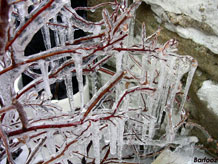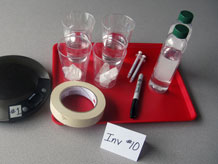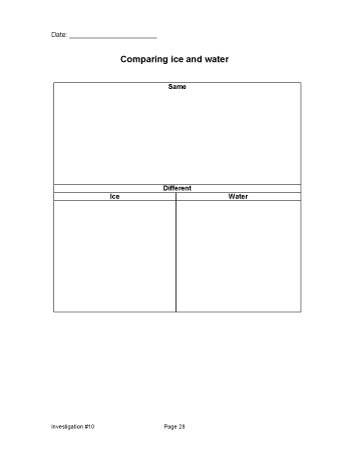How are ice and water the same and different?
Plan Investigation 10

Barfooz, via Wikimedia Commons
There's no mistaking ice for water, but they are the very same type of matter, only in different states or phases. How can they be the same and yet so different? Even ice takes a variety of forms, such as the frozen surface of a lake, hailstones, icicles, sleet, snow, frost on the window, icebergs, and the common ice cube, to name a few.
This is the first of three sessions in which students investigate and compare ice and water, and learn more about the transformation of water to ice, or ice to water.
Today students compare the properties of ice and water. Next they record the weight and volume of a container of water before it is sent off to the freezer. There is a brief discussion about the condensation that forms on the plastic cups holding ice. Finally, students share their observations about how ice and water are the same and different.
By the end of this session students will start to identify ways in which ice and water are the same and different. This investigation will continue for two more science classes.
Learning Goals
- Understand that liquid water and solid water (ice) have different properties
| Sequence of experiences | ||
|---|---|---|
| 1. Ask the question | All Class | 10 Mins |
| 2. Explore | Pairs | 20 Mins |
| 3. Discuss condensation | All Class | 5 Mins |
| 4. Share observations | All Class | 10 Mins |
Materials and Preparation
For the class:
- Post the investigation question in a place where all students can see it.
- Make a class chart titled, "Comparing Ice and Water"; an example is found in Step 4.
- 2 trays of 1/2-inch mini ice cubes

For each group:
- 1 digital scale
- 1 6in strip of masking tape
- 1 fine-tip permanent marker or pen
- 2 12oz clear plastic cups 1/3 full of water
- 2 12oz clear plastic cups each holding 15 ice cubes
- 2 droppers (1cc small syringe)
- 2 8oz plastic capped water bottles, 3/4 filled with room temperature water









